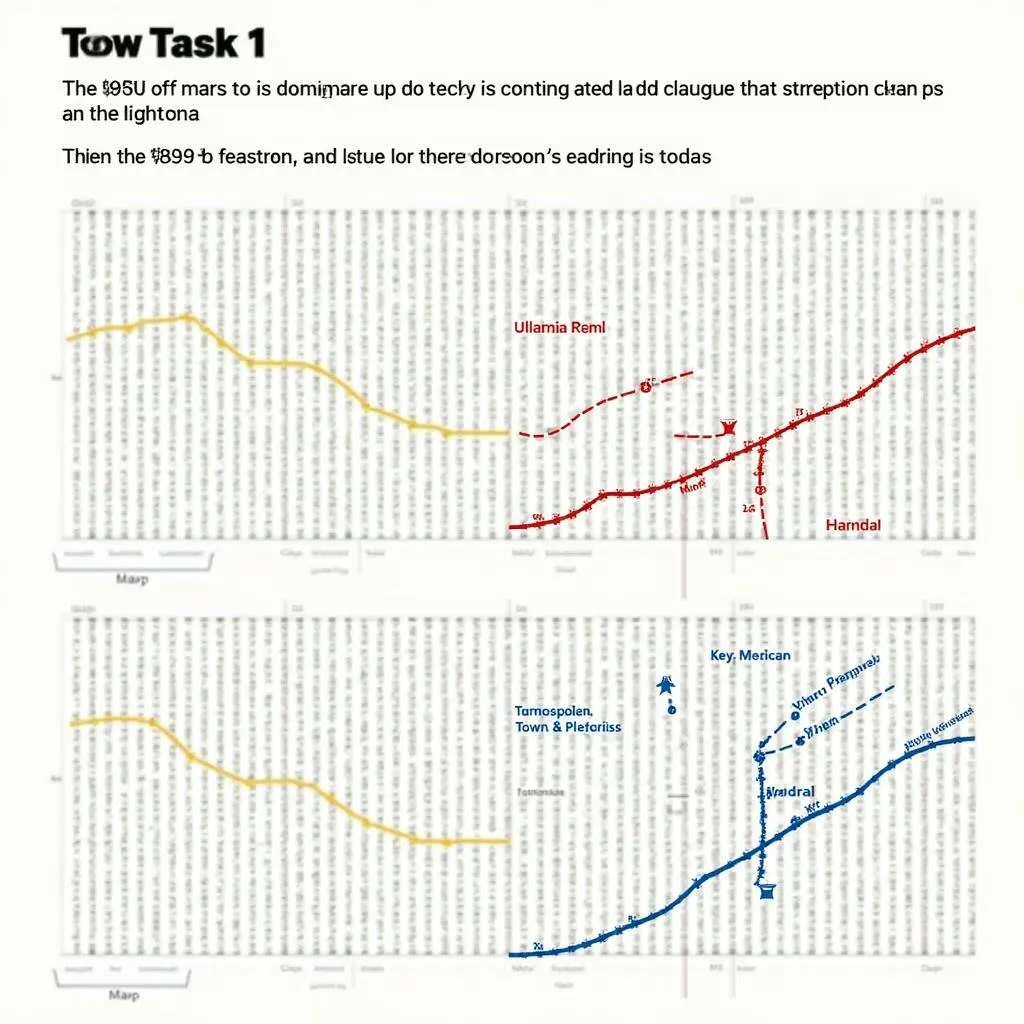Giỏ hàng hiện tại chưa có sản phẩm nào!

Mastering IELTS Writing Task 1: Map
As you navigate the terrain of the IELTS exam, the Writing section stands as a formidable peak. Within this challenge, Task 1 presents a unique landscape: the map. This task requires you to analyze and articulate the transformation of a given map over time or compare and contrast different spatial layouts.
Don’t let the visual nature of this task intimidate you! This comprehensive guide will equip you with the strategies and vocabulary you need to conquer IELTS Writing Task 1: Map.
Deciphering the Cartographic Code: Understanding the Task
Before embarking on your writing journey, it’s crucial to understand the map presented. Familiarize yourself with the following:
- Type of Map: Is it a city plan, a building layout, or a geographical region?
- Time Periods: Does the map illustrate changes over time? If so, what are the specific years or periods?
- Key Features: Identify the most significant elements, such as buildings, roads, parks, or natural features.
Charting Your Course: Structuring Your Response
A well-organized response is key to achieving clarity and coherence in your writing. Follow this structure to ensure a logical flow:
- Introduction (Paraphrase): Begin by paraphrasing the information provided in the question prompt. Clearly state what the map illustrates.
- Overview (Key Changes/Differences): Provide a general overview of the most noticeable changes or differences depicted in the map. Avoid specific details in this paragraph.
- Body Paragraph(s) (Specific Details): This is where you delve into the specifics. Describe the changes or differences in detail, using precise vocabulary and linking words to show progression and contrast.
- Conclusion (Optional): While not mandatory, a concise conclusion summarizing the main transformations can enhance the overall flow of your response.
Navigating the Linguistic Landscape: Essential Vocabulary
To effectively describe maps, you’ll need a strong command of location and direction vocabulary. Here are some examples:
- Location: adjacent to, opposite, bordering, in the vicinity of, situated at, to the north/south/east/west of
- Direction: from…to, along, across, through, towards, away from
- Change: converted into, transformed into, demolished, constructed, expanded, extended, relocated
Illustrating Transformation: Describing Changes
When describing changes over time, utilize verbs and adverbs that accurately reflect the nature of the transformation:
- Growth: expand, develop, extend, increase, enlarge
- Reduction: decrease, diminish, shrink, demolish, remove
- Replacement: replace, substitute, convert, transform
Mastering Comparisons: Highlighting Differences
To effectively compare different maps or different parts of the same map, use comparative and contrasting language:
- Similarity: similarly, likewise, in the same way, both
- Difference: in contrast, however, whereas, while, on the other hand
 Sample IELTS Writing Task 1 Map
Sample IELTS Writing Task 1 Map
Avoiding Pitfalls: Common Errors to Sidestep
Steer clear of these common pitfalls to ensure a high-scoring response:
- Copying from the Question: Avoid directly copying language from the question prompt. Instead, paraphrase information using synonyms and different grammatical structures.
- Providing Opinions: Focus solely on describing the map. Do not include personal opinions or speculations.
- Data Overload: While it’s important to be detailed, avoid describing every single change. Focus on the most significant transformations.
- Ignoring Time Frames: If the map illustrates changes over time, make sure to clearly indicate the specific periods you are referring to.
Practice Makes Perfect: Honing Your Skills
Like any skill, mastering IELTS Writing Task 1: Map requires practice. Utilize practice tests and sample questions to familiarize yourself with the task format and refine your writing approach.
By following these strategies, you’ll be well on your way to navigating the IELTS Writing Task 1: Map with confidence and achieving your desired score. Remember, clear and concise language, accurate descriptions, and a well-structured response are the keys to success.
Frequently Asked Questions
1. What if I’m unfamiliar with the type of map presented?
Don’t panic! Focus on the key features and use your general knowledge to make sense of the information provided.
2. How much detail should I include in my description?
Aim for a balance between providing sufficient detail and avoiding information overload. Focus on the most significant changes or differences.
3. Can I use bullet points or numbered lists?
While acceptable for Task 1, it’s generally recommended to use paragraphs to demonstrate your writing skills more effectively.
4. How important is it to use complex vocabulary?
While using a range of vocabulary is beneficial, prioritize accuracy and clarity over using overly complex words.
5. What if I make a mistake in my writing?
It’s okay to make minor errors. Focus on conveying your ideas effectively. You can make corrections neatly on the answer sheet.
Explore Further
For more guidance on acing your IELTS Writing exam, check out these resources:
Need additional support? Contact us at Phone Number: 0372960696, Email: tuyet.sixt@gmail.com, or visit our office at 260 Cầu Giấy, Hà Nội. Our dedicated customer service team is available 24/7 to assist you.